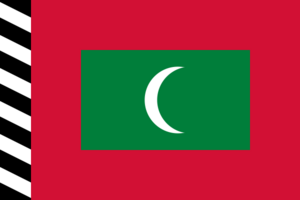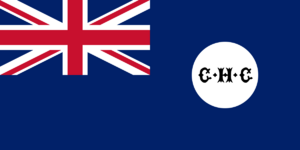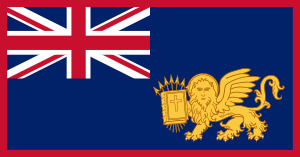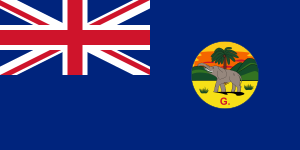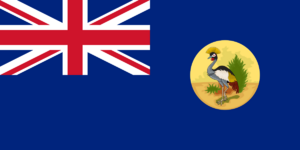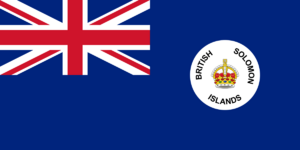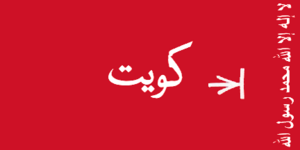British protectorate facts for kids
Imagine a big country, the British Empire, that wanted to protect smaller countries or areas. These areas were called British protectorates. It was like the British army and diplomats (people who talk to other countries) would look after them. The local rulers in these places usually stayed in charge of their own people and daily life. But the British helped with things like defense and talking to other countries. This way of ruling was called indirect rule. People in these protectorates were not usually considered British citizens.
A British protected state was a bit different. Here, the local ruler had even more control over their own country. The British mainly handled their defense and foreign affairs (how they dealt with other countries).
Contents
How Protectorates Worked
When the British took over Cephalonia in 1809, they said they were not invaders. Instead, they offered "British protection." After the Napoleonic wars, the British kept control of the Ionian Islands. They called them a protectorate, not a part of Britain. In 1815, the United States of the Ionian Islands became independent but stayed under British protection. Malta was also a British protectorate from 1800 to 1814.
Many places, like the princely states in India and areas in West Africa, were also governed this way.
British Protection Around the World
The British set up many protectorates across the globe. In the Pacific Ocean, the 16 Gilbert Islands became a British Protectorate in 1892. This was done by Captain Davis of HMS Royalist. Later that year, Captain Gibson of HMS Curacoa declared the nine Ellice Islands a British Protectorate. In 1893, the southern Solomon Islands also became a British Protectorate.
In 1894, Uganda became a British Protectorate. The British put local kings in charge under their "indirect rule" system. Most British protectorates were managed by a Commissioner or a High Commissioner, not a Governor.
Protectorate vs. Protected State
British law had a small difference between a protectorate and a protected state. In both, Britain handled defense and foreign relations. But a protectorate had a new government set up by the British. A protected state kept its existing local government, with the British guiding it.
People from former British protectorates or protected states could become "British Protected Persons." This happened if they did not get citizenship in their own country when it became independent.
The very last British protectorate was the British Solomon Islands, which became independent in 1978. The last British protected state was Brunei, which became fully independent in 1984.
Places That Were British Protectorates
Here are some examples of places that were British protectorates:
Americas
- Barbados (1627–1652)
- Mosquito Coast (1638–1860) – This was over the Miskito Indian nation in Central America.
Arab World
- Aden Protectorate (1872–1963) – This area later became part of South Yemen. It included many smaller states like Kathiri and Mahra.
 Sultanate of Egypt (1914–1922)
Sultanate of Egypt (1914–1922)
 Anglo-Egyptian Sudan (1899–1956) – This was shared control with Egypt.
Anglo-Egyptian Sudan (1899–1956) – This was shared control with Egypt.
Asia
- Maldive Islands (1887–1965)
 Kingdom of Sikkim (1861–1947)
Kingdom of Sikkim (1861–1947)
Europe
- British Cyprus (1871–1914) – It later became a British Crown colony.
 Malta Protectorate (1800–1813)
Malta Protectorate (1800–1813)- Ionian islands (1815–1864) – A Greek state protected by Britain.
Africa
 Bechuanaland Protectorate (1885–1966)
Bechuanaland Protectorate (1885–1966) British Somaliland (1884–1960)
British Somaliland (1884–1960)- Gambia Colony and Protectorate (1894–1965)
- Uganda Protectorate (1894–1962)
 Sultanate of Zanzibar (1890–1963)
Sultanate of Zanzibar (1890–1963)
Oceania
- British Solomon Islands (1893–1978)
 Gilbert and Ellice Islands (1892–1916)
Gilbert and Ellice Islands (1892–1916)
Places That Were British Protected States
These states were never officially part of the British Empire. They kept almost full control over their own internal affairs. But the British managed their foreign policy.
 Brunei (1888–1984)
Brunei (1888–1984) Bhutan (1910–1947)
Bhutan (1910–1947) Emirate of Afghanistan (1879–1919)
Emirate of Afghanistan (1879–1919) Kingdom of Nepal (1816–1923)
Kingdom of Nepal (1816–1923) Kingdom of Egypt (1922–1936)
Kingdom of Egypt (1922–1936) Federation of Malaya (1948–1957) – This included many smaller Malay states.
Federation of Malaya (1948–1957) – This included many smaller Malay states. Tonga (1900–1970)
Tonga (1900–1970) Bahrain (1880–1971)
Bahrain (1880–1971)- Sheikhdom of Kuwait (1899–1961)
- Qatar (1916–1971)
 Trucial States (1892–1971) – These states later formed the UAE.
Trucial States (1892–1971) – These states later formed the UAE. Kingdom of Sarawak (1888–1946)
Kingdom of Sarawak (1888–1946) North Borneo (1888–1946)
North Borneo (1888–1946)




